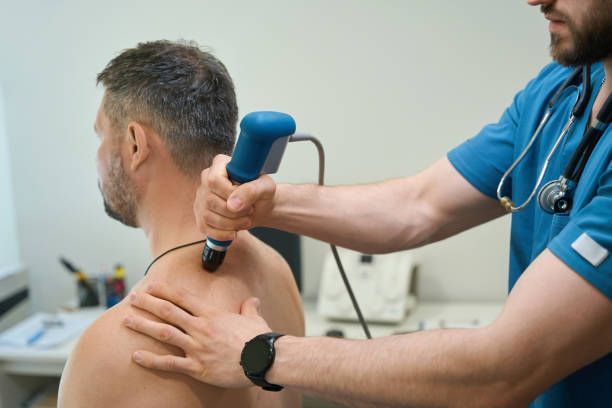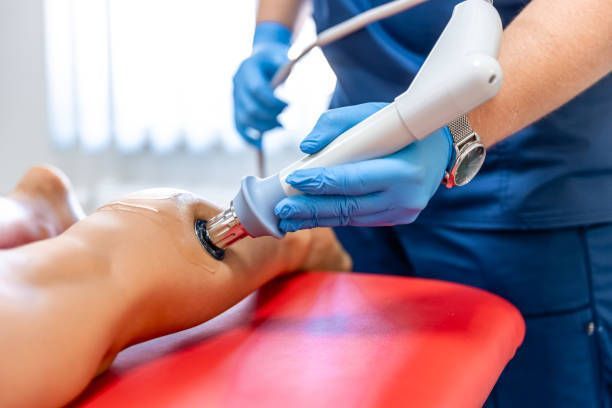Carpal Tunnel Syndrome (CTS) is a condition in which the median nerve is compressed as it travels through the wrist at the carpal tunnel and causes pain, numbness and tingling in the hand which is supplied by the median nerve. This nerve innervates the first three digits as well as the radial side or half of the ring finger or 4th digit. Women are three times more likely than men to develop carpal tunnel syndrome. This may be due to an anatomical size difference of the tunnel between men and women. It is usually found in the dominant hand first and it produces severe pain. Carpal tunnel syndrome usually occurs only in adults.
The symptoms of CTS usually start gradually. Patients report swelling, burning, tingling, or itching numbness in the palm of the hand and the fingers, especially the thumb and the index and middle fingers. The symptoms can appear in one or both hands; usually during the night. A person with CTS may wake up feeling they need to “wake up” their hands by shaking or wriggling them to restore sensation. As symptoms progress, people might feel numbness and tingling during the day. In addition, patients may experience decreased grip strength. This may make it difficult to make a fist, hold a coffee mug, or brush their hair. It is also important to note the muscles at the base of the thumb may waste away (thenar atrophy).
How does an individual get CTS? Carpal tunnel syndrome is not solely found in one industry or occupation. The mechanism of injury is compression of the carpal tunnel. One only has to look at a diagram to see how narrow the carpal tunnel is. There are certain health conditions which can affect the carpal tunnel. These conditions include: rheumatoid arthritis, pregnancy, diabetes, obesity, hypothyroidism, and a narrowing of the carpal tunnel. This can be due to injury that causes scar tissue formation, fracture or subluxation/dislocation of the carpal bones. There are also occupational causes such as heavy manual work, working with a jackhammer or other vibrating tools, and highly repetitive tasks such as sewing.
How do you treat Carpal Tunnel Syndrome? Carpal tunnel syndrome should be treated as early as possible after you begin to experience symptoms. It is necessary to go see your primary care doctor. He/She may send you to see a neurologist. Your doctor will perform a history and a physical examination. The doctor may also send you for x-rays or an MRI to find out what may be causing your pain. In addition, the doctor may order an electromyogram (EMG) and a nerve conduction velocity (NCV). The test evaluates the electrical activity of your muscles when they contract and when they’re at rest. This test can also determine if muscle damage has occurred. The NCV is another test where a small current is passed through the median nerve to determine if electrical impulses are being normally conducted or slowed in the carpal tunnel. This test may be used to diagnose your condition and rule out other conditions.
Some people with mild-moderate symptoms of carpal tunnel syndrome can reduce their discomfort by changing their routines. Patients are advised to take more frequent breaks to rest their hands. In addition, they are advised to avoid those activities that worsen their symptoms. They are also advised to use ice packs to reduce swelling. Additional treatment options include wrist splinting, medications and surgery. Wrist splinting is usually done at night since people tend to sleep with their wrists flexed.
Nonsteroidal anti-inflammatory drugs or (NSAIDs). NSAIDs such as ibuprofen or naproxen may help relieve pain from carpal tunnel syndrome temporarily. Corticosteroids. The doctor may inject your carpal tunnel with a corticosteroid such as cortisone to relieve your pain. This class of drugs decrease inflammation and swelling, which can relieve pressure on the median nerve. The use of Vitamin B6 has also been suggested.
Surgery is the last option for people suffering with severe symptoms of CTS. If your symptoms persist then surgery may be the last best option. The goal of carpal tunnel surgery is to relieve pressure on your median nerve by cutting the transverse carpal ligament. The surgery may be performed with two different techniques. The first is endoscopic surgery. In endoscopic surgery, your hand surgeon uses a scope with a tiny camera attached to it (endoscope) to see inside your carpal tunnel and cut the transverse carpal ligament through small incisions in your hand or wrist. The second option is open surgery. In open surgery, the surgeon makes a larger incision in the palm of your hand over the carpal tunnel and cuts through the transverse carpal ligament to free the nerve.
Stretching and strengthening exercises can be helpful in people whose symptoms have decreased. Chiropractic and acupuncture may also be helpful. Yoga has been shown to reduce pain and improve grip strength among patients with carpal tunnel syndrome.
For more information please contact the following organizations:
BRAIN
P.O. Box 5801 Bethesda, MD 20824
(800) 352-9424
http://www.ninds.nih.gov
American Chronic Pain Association (ACPA)
P.O. Box 850 Rocklin, CA 95677-0850
ACPA @ theacpa.org (remove spaces)
http://www.theacpa.org
Tel: 916-632-0922 / 800-533-3231
Fax: 916-652-8190
National Institute of Arthritis and Musculoskeletal and Skin Diseases (NIAMS)
National Institutes of Health, DHHS
31 Center Dr., Rm. 4C02 MSC 2350
Bethesda, MD 20892-2350
NIAMSinfo @ mail.nih.gov (remove spaces)
http://www.niams.nih.gov
Tel: 301-496-8190 877-22-NIAMS (226-4267)
Occupational Safety & Health Administration
U.S. Department of Labor
200 Constitution Avenue, NW
Washington, DC 20210
http://www.osha.gov
Tel: 800-321-OSHA (-6742)



